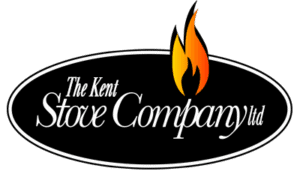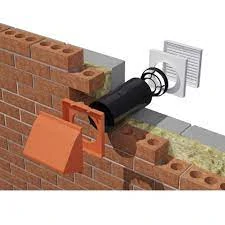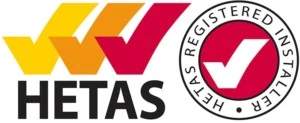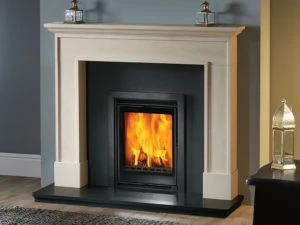About Wood Stoves or “Woodburners / Log burners”
An A-Z guide
This guide by The Kent Stove Company is designed to help you find your way around some of the jargon and terms you will come across as you search the world of wood-burning and multi-fuel stoves, often referred to as “woodburners”, log burners or “stoves”.
While we’ve tried to make it as accurate as possible it is a general and generic guide, not a technical manual. There may be more than one correct way of doing or describing things. For individual stoves always follow the manufacturer’s instructions and user manuals.
Jump to: Air, Air Controls, Air Vent, Air Wash, Ash / Ash Pan, Baffle / Baffle Plate, Balanced Flue, Cast Iron vs Steel, Chimney / Chimney Liners, Cleanburn, Closed Combustion, Closure Plate, Coal, Cowl, DEFRA, Direct Air, Efficiency, Flue, Grate, Hearth, HETAS, Inset / Insert Stoves / Cassette Stoves, KW Kilowatts, Moisture Content, Multi-Fuel, Multi-Fuel vs Wood Burning Stoves, Register Plate / Closure Plate, Smoke Exempt, Smoke Control Area, Tripleburn, Twin Wall System, Wood
Air
Nothing burns without air. Petrol, gas, rocket fuel, coal and logs all need a supply of air to burn: combustion. More air fed into the stove equals more combustion. That's how the stove temperature is controlled.
Most modern stoves have two, and often three directions of air supply. Some use just one control lever, some two, and some three separate controls.
Primary Air is generally fed into the base of the stove and is mostly associated with providing combustion air from below for solid fuel or coal although it may be fully opened on lighting to add air input to get the stove up and running.
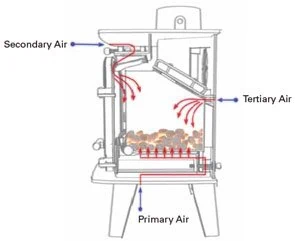
Secondary Air is generally fed in towards the top of the stove and mostly provides combustion air from above for burning wood. This air supply is generally fed down the inside of the glass on modern stoves, keeping the glass clean and soot-free: a method now commonly referred to as "Airwash".
Confusingly the "secondary" air is the one you will primarily control the stove with when burning wood!
Tertiary Air is usually fed into the back of the stove, above the fire bed, and adds air to any unburnt gases from the primary burn, igniting them for a clean and complete burn. It also produces that attractive "dancing flame" effect
See this page on the Stovax website that explains it in detail
Air Controls
(General – for individual stoves always follow the manufacturer’s instructions and user manuals.)
Stoves are generally first lit with all controls open, and possibly the door in the cracked open position until fully alight and burning well. Then:
Wood burns best on a bed of ash on a flat base with a supply of air from above or at the same level. The primary air is therefore closed down once the stove is fully lit and the airflow controlled with the secondary air control.
As above in "Air", confusingly the "secondary" air is the one you will primarily control the stove with when burning wood!
Coal burns best with a supply of air from below. In a multi-fuel stove, a grate/grill is fitted to supply air from beneath the fire bed. When burning coal the secondary air should still be used and provides a downward flow, inside the glass, for Airwash (keeping the glass clear). Once fully lit the primary air control should also be used to provide an air supply for the coal. Stoves do vary: see your user manual.
Tertiary air is often supplied at a fixed rate as it’s purpose is just to ignite any unburnt gases on their way out of the stove. This also gives an impressive “dancing flame” display. On some models, it is controllable for fine-tuning the flame.
Air Vent
(Note: Rough guide only. Do take qualified advice)
Stoves with a nominal output greater than 5KW require an inward “Air Vent” to be fitted to supply a sufficient quantity of air for the stove to perform properly and safely. This generally takes the form of a hole drilled through the outside wall to feed air into the room, with a vent cover inside and out. Under building regulations the vent should not be closable and should remain permanently open.
You may notice a number of stoves on the market with a claimed maximum output well in excess of 5KW but which conveniently have a quoted “Nominal output” of 5KW in order to get around this requirement.
New-build properties are so well sealed up as a result of modern building regulations that they require an air vent regardless. As a rough guide, by “new” we are talking generally about properties built after the 2008-2010 period. In properties built prior to this and those that have not subsequently been “sealed up” it’s generally taken that they’re “leaky” enough not to need a vent for stoves up to 5KW. Thereafter a vent of just under one square inch for every KW over 5KW should be fitted. An 8KW stove, therefore, would require a vent of just under 3 square inches in size or 40 square millimetres. The vent must be permanently open.
See also: "Direct Air" below. (Air ducted direct into the stove.)
Air Wash
Common now on almost all new stoves. This is a design feature where the flow of air through the firebox is directed down the inside face of the stove glass keeping it clear and preventing the glass going black and sooty. This flow is generally controlled by the secondary air control (most often the top air control on a stove with two air controls).
The airwash needs a reasonable flow of air through the stove for it to work effectively, so if you tend to run your stove slowly or have it shut right down for long periods, like perhaps overnight, you may well find that the glass soots up.
See this page on the Stovax website that explains it in detail
" The Airwash doesn't work - my glass goes sooty" This is a complaint sometimes heard from customers, but commonly it is not the fault of the airwash system. There are usually three main reasons for sooted-up glass on a woodstove:
- The wood is too damp or contains a high moisture content. Your wood for burning should contain less than 20% moisture. Test the inside of a log with a moisture meter.
- The air controls are being set incorrectly: Where a stove has a top and bottom air control, the top control usually controls the flow through the airwash system, keeping the glass clear. For burning wood or coal, once the stove is up to temperature the bottom control should be shut (or just cracked open if burning coal) and all control reverts to the top control. If this top control is shut the airwash won't work.
- The stove is being run too slowly so there is not enough flow of air through the airwash system for it to work.
- If it's none of the above it may be a result of a poor draw on the stove causing it to run too slowly. This can be the result of a chimney that's too short or too cold or partially blocked. Get the chimney swept and if still poor draw consider insulation or a draw enhancing cowl.
Ash / Ash Pan
Coal produces much more ash than properly burnt wood. Coal can only be burnt on a multi-fuel stove. This will have been fitted with a grate/grill and an ash pan beneath for ash removal. As wood burns better on a bed of ash it should not be completely cleared out. When it becomes excessive some should just be removed with a small shovel.
Baffle / Baffle Plate
A baffle plate is a metal plate (sometines stone) that sits internally over the firebox. The baffle plate partially blocks off the chimney and forces hot gases to remain in the stove for a longer period. This increases the efficiency and heat output of the stove. It can be removed for chimney sweeping and may need replacing after long use.
Balanced Flue
(Gas burners only)
Sometimes referred to as a room-sealed appliance and can be a solution where a property has no masonry chimney and a freestanding flue-pipe would be inappropriate. It uses two, twin pipes or ducts coming from the stove through the wall to outside. One duct is inside the other. The inner pipe ejects the burnt, hot gases and the new fresh inward air is drawn in around this pipe. The inward flow balances with the outward flow - hence "Balanced flue".
Not suitable for wood or multi-fuel burning stoves.
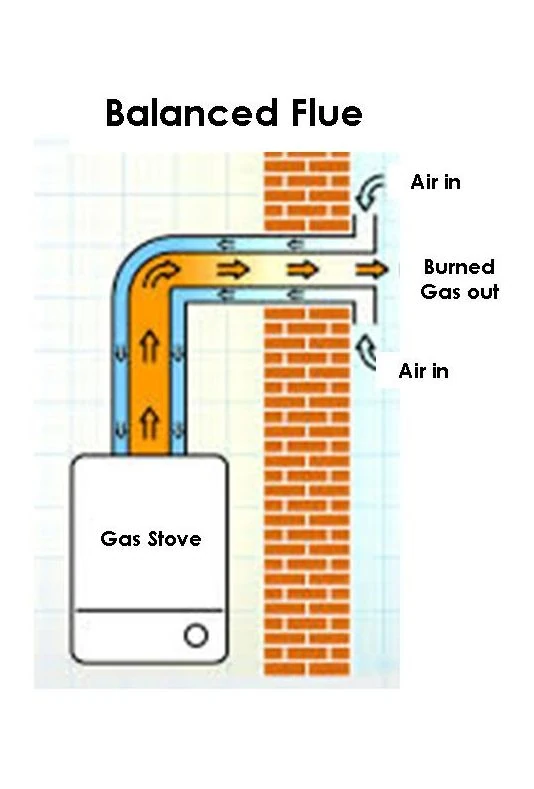
Cast Iron vs Steel
Stoves can be be made of all cast iron (a hard, relatively brittle alloy which can be readily cast in a mould), all steel, or different parts made of a combination of the two. It is common for steel stoves to have cast iron doors as this offers wider design options.
Steel stoves tend to heat up and radiate heat more quickly but then lose it more quickly as the fire dies down. Cast iron is slower to radiate initially but lasts longer and gives a more even heat with fewer peaks and troughs.
With modern materials both are arguably equally durable. Some prefer the look and feel of cast iron but it is generally more expensive than the steel equivalent.
Chimney / Chimney Liners
There is enough information and regulation around chimneys to fill a complete website. We will therefore only cover the basics here. Any specific advice can only be given by surveying your property, establishing what you have now and what type of stove you would like to have installed.
It would then be possible to advise you on the best possible type of installation to match your requirements with an estimate or quotation to supply and install. There are generally two main options:
1. If you have an Existing Chimney – Flexible chimney liner.
A chimney liner can be fitted. This is a flexible metal tube – usually 5 or 6 inches in diameter – that is fed into your existing chimney and connected to the stove at one end and a cowl on the chimney top at the other end. This provides a safe, sealed path from the stove to the outside of the building.
2. If you do not have a chimney – Twin Wall System.
This is a rigid stainless steel tube with an inch of insulation around it and then a second tube around that (twin wall). This pipe comes in sections and can either go straight up through the house and roof or directly through the outside wall and then externally up the side of the building.
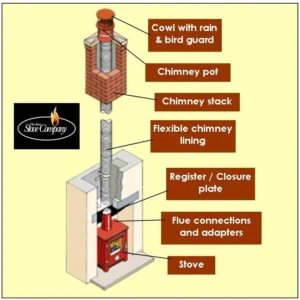
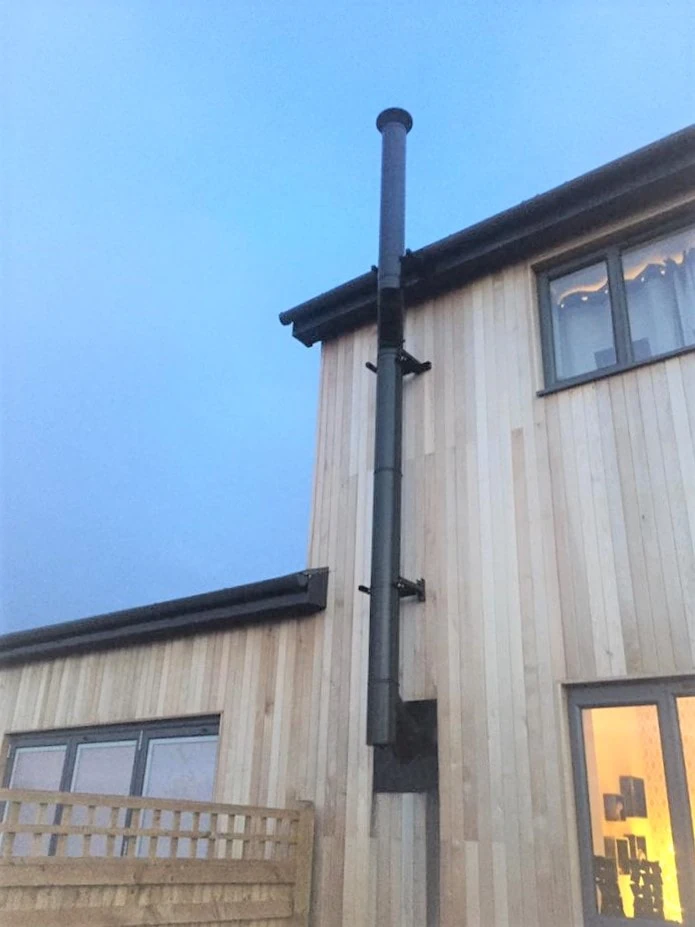
Cleanburn
This is becoming a generic term used by some manufacturers for the system whereby air is fed into a stove above the main fire bed, sometimes referred to as “Tertiary Air” (See “Air” above). The extra oxygen provided causes unburnt gases to ignite rather than go up the chimney and pollute the atmosphere – hence Clean burn.
The combination of Primary air, Secondary air and Tertiary air supply to a stove is sometimes referred to a Tripleburn – another piece of jargon meaning a clean or efficient burn.
Closed Combustion / Direct Air
This is a system where air is fed directly into a stove via a duct or pipe from outside of the building. It is often referred to as "Direct air". Combustion takes place in the stove and the burnt gases then flow up the chimney/flue directly to outside again. This is instead of air being drawn into the stove from inside the building which can cause drafts as it is drawn in through leaky doors and windows.
Some stoves offer a "Direct air" option and a "Direct air kit". This usually means that there is a direct air connection on the stove which can be attached to a duct to the outside of the building. The connecting pieces being the direct air kit.
Modern buildings are so well sealed that a stove may not function properly without this arrangement, or a door/window being left ajar to provide a supply of air.
Closure Plate
A closure plate is non-combustible plate that is used to cosmetically seal off the chimney above the stove when a chimney liner is fitted. It also stops heat going up the chimney and debris – old soot etc coming down. If it was not well sealed it would not be a major issue as the chimney liner provides a sealed route from the stove to the outside world.
If a chimney liner is not fitted, that is to say the stove emits smoke into the chimney cavity, a Register plate is required. This must be made of stainless or galvanised steel and provide an air tight seal between the chimney cavity and the room below. It will also, in those circumstances, need an inspection / cleaning door or hatch.
In practice, a stainless or galvanised plate is often fitted regardless.
Coal
(for multi-fuel stoves)
Always check the manufacturer’s instructions. Multi-fuel stoves can generally burn smokeless fuel and anthracite but regular house coal is not generally recommended. This produces sulphur which will damage your chimney liner and most probably your stove as well. Burning the wrong fuel can invalidate warranties. Coal should not be burnt in a wood burning stove (woodburner). Multi-fuel kits are available for some woodburners to enable them to burn coal as well.
Cowl
The unit on top of the chimney pot. It will often incorporate a rain cover and bird guard. The flexible chimney liner can be sometimes be suspended from the cowl.
DEFRA
Department of the Environment Farming and Rural Affairs
“DEFRA exempt stoves” (the correct terminology) or SE (Smoke Exempt) are stoves that are cleared to burn specified fuels in smoke control areas. In old terms: you can use these stoves in Smokeless Zones, usually towns. This is usually achieved by including a mechanism in the stove that prevents it being fully shut down. A fully shut down stove is not burning efficiently or “cleanly” and therefore emits more polluting gases and particles.
Direct Air
This is a system where air is fed directly into a stove via a duct or pipe from outside of the building. Combustion takes place in the stove and the burnt gases then flow up the chimney/flue directly to outside again. This is instead of air being drawn into the stove from inside the building which can cause draughts as it is drawn in through leaky doors and windows. Modern buildings are so well sealed that a stove may not function properly without this arrangement, or a door/window being left ajar to provide a supply of air.
You will often see "Direct air" being offered as an option on some stoves. Also the availability of a "Direct air kit" to connect the stove directly to outside air.
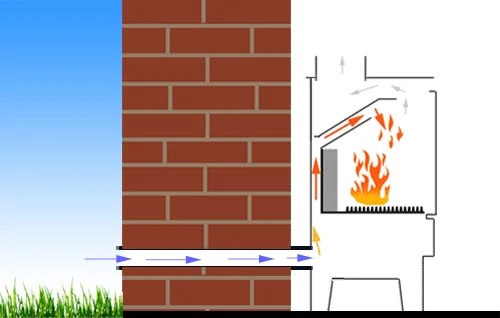
Efficiency
In a typical traditional open fire, approximately 70-80% of the heat produced goes up the chimney and is lost. This makes the fire approximately 25% “efficient”. In wood burning stoves only around 15 - 25% of the heat is lost up the chimney making them around 75% “efficient”. Most manufacturers quote an “efficiency” rating for each model, some claiming as much as 88%.
A word of warning though: take advice before choosing an ultra-efficient stove. Hot air rises through the chimney helping to give a healthy draw. If there’s very little hot air rising, the stove may prove difficult to start and keep going well. You may need to run it hotter than you wish (and burn more fuel) to keep the chimney working well. Chimney length and other local factors may favour a less efficient model.
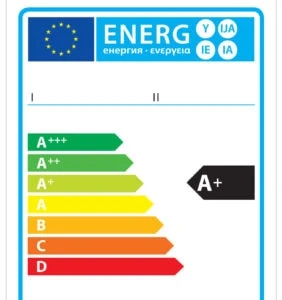
Flue
The part of a chimney which carries the smoke and gasses away, i.e. the “core” of a brick chimney or the interior of a flexible chimney liner or a stove pipe.
Grate
The grill, usually made of cast iron on which the bed of the fire sits. Grates are usually only fitted to multi-fuel stoves as coal requires air from beneath to burn efficiently. Wood-only stoves do not generally have a grate, the wood burning more efficiently on a flat bed, ideally with a layer of ash beneath.
Hearth
The non-combustible base on which a stove stands. As a general rule, a stove will require 300mm (about 12 inches) of non-combustible base, or hearth in front of the stove and 150mm (6 inches) on either side of the stove to meet UK building regulations.
Stoves that stand alone in a room and are not in a fireplace with a flue going up a brick chimney generally require a hearth of 840mm x 840mm minimum to meet UK Building regulations. Notwithstanding this, they will still need to meet the 12" / 6" rules above, so may need to be bigger, depending on the stove position.
HETAS
Heating Equipment Testing & Approval Scheme
HETAS is the official body recognised by Government to approve biomass and solid fuel heating appliances, fuels and services, including the registration of competent installers and servicing businesses.
Inset / Insert Stoves / Cassette Stoves
(The 3 terms above are often used to mean the same, or similar, thing)
Inset stoves are the type that are set into a fireplace or wall as opposed to free-standing. They can save space as they sit flush with the wall or fireplace, not protruding into the room. Many are designed to a standard size to slide into a standard existing fireplace with ease – but by no means are all fireplaces standard so it doesn’t always work out that easily.
These stoves generally have an inner and outer casing, creating a jacket around the stove which transmits its heat into the room by convection as air circulates inside the jacket. There is some debate about their efficiency with positive claims that convection produces a better “flow” of heat into the room where others maintain too much heat is lost into the surrounding brickwork and that free-standing radiation is better. See manufacturers websites and brochures for claims and counter-claims.
KW Kilowatts
Stove heat output is normally given (or claimed) in Kilowatts. For 1KW think of the heat from one bar of an old glowing electric fire or the low (1) setting on an average fan heater. It is not easy to prove the manufacturer’s claims or even to find out exactly how they have been arrived at. Most give a range of KW output and a “nominal” output: e.g. 3-7 KW, nominal 5KW. It’s probably best to think of the nominal output as the “normal cruising speed”; the stove is not running flat out, nor is it idling.
See the section on "Air vents": a lot of stoves are quoted as "Nominal 5Kw" to prevent the need for an inward air vent for stoves over 5Kw.
The actual size of the firebox may be a better guide when making stove comparisons. The more fuel – logs and / or coal that the stove can sensibly accommodate the hotter it can burn and the more heat that will be generated.
See also “Air vent” and “Efficiency” above.
How much power (Kw) do I need?
As a rough guide 1Kw is good to heat around 15 cubic metres of room, assuming no other heating on a zero temperature day. So if your room was 4.5m x 4m x 2.5m high (13' x 12' x 8'), 45 cubic metres, divide that by 15 and you'll see you need around 3Kw output.
This calculation has to be adjusted for a number different factors. The degree of insulation and sealing is a main factor, with a new-build house built to modern building regulations needing considerably less, and a draughty old, poorly insulated house needing more. We can advise more accurately with a survey of the property.
Moisture Content
The amount (%) of moisture (water) content contained in a material: we’re interested in wood/logs. For good operation of your stove, it is essential that this is kept to a minimum and that you use seasoned dry wood. This generally means a moisture content of less than 20%. Moisture meters are available for about £25 to test the moisture content.
The best way to blacken your stove glass and gunk up your stove and chimney liner – increasing the chance of chimney fires – is to burn wood with a moisture content greater than 20%. It will also burn poorly and give out little heat. A 9-inch dry log weighs about 600 grams. A damp one containing 25% moisture will, therefore, contain around 150 grams of water, which is about half a jam-jar full you’re throwing on the fire with every log. You can hear the “hiss” from burning damp wood.
Source your wood from a reputable supplier who can guarantee you a moisture content ideally of less than 20%. Freshly cut timber should ideally season for 2 years – depending on type. Seek out “seasoned”, “barn stored” or “kiln-dried” timber and test it with a meter to check it’s moisture content.
Multi-Fuel
Wood burns best on a flat base on a bed of ash and drawing air from above and sides. Coal prefers to sit on a grate with a flow of air from both beneath and above. The main technical difference between a wood burning stove and a multi-fuel therefore is one of design: a flat base for a wood burner and a grate for burning coal. Some stoves are set up for wood only with a conversion kit (a grate) available to use them with coal.
A mulit fuel stove with a grate will also have a "Riddler" to shake the grate and keep it clear so air can flow through it.pp
Burning wood efficiently and correctly produces little ash; perhaps 1-3% by weight. Coal produces much more; closer to 6-7% and so most multi-fuel stoves are fitted with a removable ash pan.
Multi-Fuel vs Wood Burning Stoves
For the technical difference between a wood burner and a multi fuel stove see "Multi fuel" above.
It can be quite a big debate but here are just some of the (alleged) pros and cons of the two types:
Wood burning stoves
- Burn wood only
- More eco-friendly and environmentally sustainable.
- Carbon neutral or close to it
- Cleaner burning and potentially less polluting
- Very little ash produced
- With good quality dry, seasoned logs 95% should go up the chimney
- You may have your own cheap/free supply of wood
- Wood stoves will not just burn any old rubbish as is commonly thought
Multi-fuel stoves
- Can also just burn wood, smokeless fuels, Anthracite, Peat/turf briquettes: greater flexibility.
- More ash created and generally need an ash pan and more cleaning out.
- Some fuels can produce greater temperature than wood equivalent.
- Some fuels can last longer than wood equivalent so less frequent refuelling and possibility to keep the fire in for longer.
- Greater flexibility: if you can’t get hold of logs/wood you can use an alternative.
- On smaller stoves the grate and ash pan can take up as much as a third of the fire box compared to the same sized wood stove leaving little space for fuel which is less than ideal if you generally burn wood only
Register Plate / Closure Plate
A closure plate is a non-combustible board that is used to cosmetically seal off the chimney above the stove when a chimney liner is fitted. It also stops heat going up the chimney and debris – old soot etc coming down. If it was not well sealed it would not be a major issue as the chimney liner provides a sealed route from the stove to the outside world.
If a chimney liner is not fitted, that is to say, the stove emits smoke into the chimney cavity, a Register plate is required. This must be made of stainless or galvanised steel and provide an airtight seal between the chimney cavity and the room below.
In practice, a stainless or galvanised plate is often fitted regardless.
Smoke Exempt
See DEFRA approved.
Smoke Control Area
Similar to the old Smokeless zones. See DEFRA approved.
Tripleburn
See Cleanburn
Twin Wall System
Wood
There is a myth that you can throw any old rubbish on a wood burner, heat your house for free, and all will be well. While it’s great to find a source of scrap / free wood and save costs it pays to be a little bit careful in what you burn. Firstly see “Moisture content” above.
Then consider if your free / reclaimed timber has been “treated” with preservatives. While regulations are much tighter these days some of the “old wood” you might find may have been treated with all sorts of very nasty chemicals that will do neither you nor your stove any good. See this advice from a wood supply company.
Source your wood from a reputable supplier who can guarantee you a moisture content ideally of less than 20%. Freshly cut timber should ideally season for 2 years – depending on type. Seek out “seasoned”, “barn stored” or “kiln dried” timber and test it with a meter to check it’s moisture content.
Best wood for your stove. This this page from Charlton & Jenrick lists the good, not so good and bad woods for stove burning.
For in-depth information about wood and other solid fuel visit this page at The Solid Fuel Technology Institute.
Forestry commission advice on DIY sourcing wood for wood stoves: Click here.
